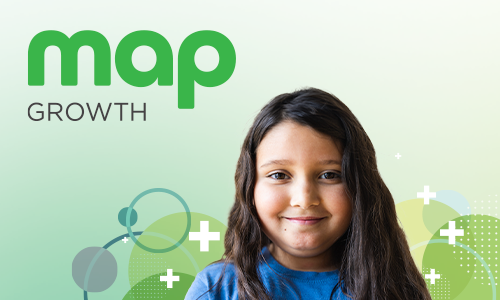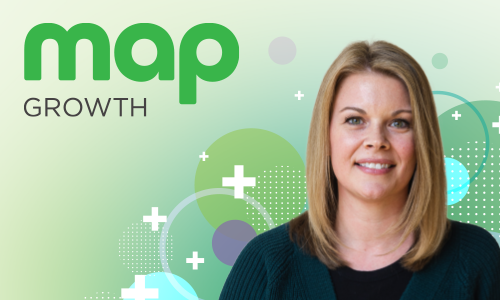
As school leaders, one of the greatest opportunities we have is to transform student assessment data from a periodic snapshot into an ongoing tool for instructional improvement and student success. By using data continuously, rather than confining its use to the weeks following the test, school leaders can foster a culture of growth, where teachers and students benefit year-round.
Sustaining improvement in teaching and learning is most effectively driven by strategies like professional learning communities (PLCs), instructional rounds, targeted feedback, and instructional coaching. Each of these approaches, when centered around data, can lead to measurable and lasting change in instructional practice.
Here’s how school leaders can use assessment data to make these strategies work effectively.
1. Professional learning communities: A collaborative approach to data use
Professional learning communities (PLCs) have long been recognized as a powerful driver of school improvement, particularly when they operate with a strong focus on data. PLCs provide structured time for teachers to collaborate, analyze data, and develop action plans that directly respond to student needs.
Research by Richard DuFour et al. highlights the effectiveness of PLCs, particularly when their focus is centered on data and follows a cycle—plan, implement, reflect, and adjust—creating a continuous feedback loop that drives instructional improvement.
The core benefit of PLCs is the shared responsibility for student success. By gathering teachers to collectively examine assessment data—both formative and summative—PLCs create space for reflective dialogue that can lead to powerful instructional shifts.
School leaders should:
- Use data as a starting point. Teachers can begin PLC sessions by reviewing recent student assessment data to identify patterns, gaps, and areas for growth. For example, a drop in reading comprehension scores might prompt discussions about instructional strategies, resources, and specific interventions for students who need additional support.
- Encourage collaborative problem-solving. Once areas of need are identified, PLCs can develop instructional strategies tailored to address these challenges. Importantly, instructional solutions are implemented and reviewed in subsequent meetings to track progress.
2. Instructional rounds: Building collective efficacy through data-informed observation
Instructional rounds are a collaborative, non-evaluative process where groups of educators visit classrooms to observe teaching practices with a specific focus. Like PLCs, rounds benefit significantly when driven by assessment data providing the foundation for identifying the most urgent instructional challenges.
Research by Elizabeth City et al. has shown that instructional rounds lead to stronger professional learning cultures and promote the development of a shared instructional language and understanding about what high-quality instruction looks like. When rounds are used to address issues identified through data, they become a powerful tool for continuous improvement.
School leaders can:
- Prioritize data-driven focus areas. Use student assessment data to pinpoint a common area of need, perhaps low performance in math problem-solving or inconsistent application of reading strategies across grades. The rounds team can then focus their observations on how teachers address this specific issue in the classroom.
- Leave time for shared reflection. After conducting rounds, teachers gather to debrief. This conversation, when structured around the data and the focus of the observation, generates actionable insights that teachers can take back to their classrooms. Note that these conversations should be framed to promote learning and improvement, not evaluation.
3. Actionable feedback: Tying data to instructional growth
Teacher feedback is one of the most direct ways that school leaders can influence classroom instruction, but for feedback to truly be transformative, it must be timely, specific, and actionable.
Research by John Hattie emphasizes the importance of feedback as one of the most impactful factors in student achievement, but the key is in its delivery and follow-up. Feedback that is specific and grounded in data not only enhances teaching practices but also helps teachers feel supported in their professional growth.
To make feedback more effective, school leaders should:
- Use data as evidence. When providing feedback to teachers, use student assessment data to pinpoint specific areas for instructional improvement. For example, if a teacher’s students are having a hard time with inferential reading questions, the feedback should center on strategies for teaching higher-order thinking skills.
- Provide targeted, actionable steps. Vague feedback is rarely helpful. Instead, give teachers clear, manageable next steps. If assessment data indicates a need for differentiated instruction, for example, feedback should include concrete strategies, such as grouping students by ability or using scaffolds for challenging tasks.
- Follow up. Feedback should be the beginning of a conversation, not a one-off event. Effective leaders follow up on the implementation of feedback through subsequent observations and data reviews to track progress.
4. Instructional coaching: Personalized professional development using data
Instructional coaching offers an individualized approach to professional development that is highly responsive to data and teacher needs. Coaches work one-on-one or with small groups of teachers to provide targeted, sustained support for instructional improvement.
Research by Jim Knight shows that instructional coaching leads to significant improvements in teacher practice, particularly when it is sustained over time and tied to data. By using student performance data to shape the goals and focus of coaching, school leaders ensure the support teachers receive is relevant, timely, and impactful.
Instructional coaches play a critical role in helping teachers interpret and act on assessment data. They can:
- Analyze data with teachers. Instructional coaches help teachers sift through assessment data, identifying trends and specific areas where students need additional support. Coaches then collaborate with teachers to develop instructional strategies tailored to their classroom context.
- Model and co-teach. Once areas for improvement are identified, coaches can model best practices or co-teach lessons to demonstrate how data-informed strategies can be effectively implemented in real time.
- Provide ongoing support. Instructional coaching is not a one-time intervention. Coaches provide ongoing support, meeting regularly with teachers to review the impact of their changes and adjust strategies based on new data.
For more on instructional coaching, visit the instructional coaching archive here on Teach. Learn. Grow.
A call to action: A year-round approach to data-driven improvement
School leaders can ensure student assessment data becomes a year-round driver of instructional improvement by leveraging PLCs, instructional rounds, targeted feedback, and instructional coaching. Each of these strategies, when anchored in data, fosters a culture of continuous reflection and growth.
The key is to make data actionable. It must be more than just numbers on a spreadsheet and serve as a tool that informs collaborative planning, reflective practice, and individualized support. By doing so, school leaders empower teachers to make meaningful, ongoing changes that improve both their instructional practice and student outcomes, long after the testing window closes.
If your school uses the MAP® Suite, I encourage you to consider our MAP® Growth™ and MAP® Reading Fluency™ professional learning workshops.





